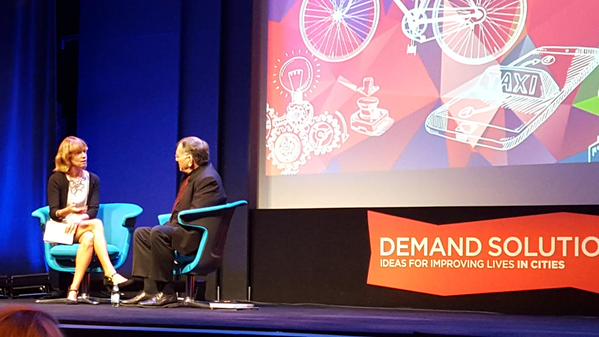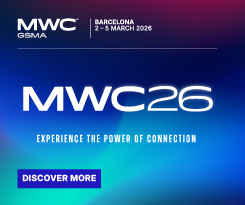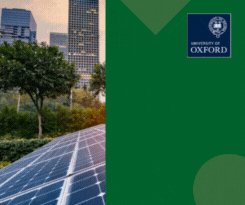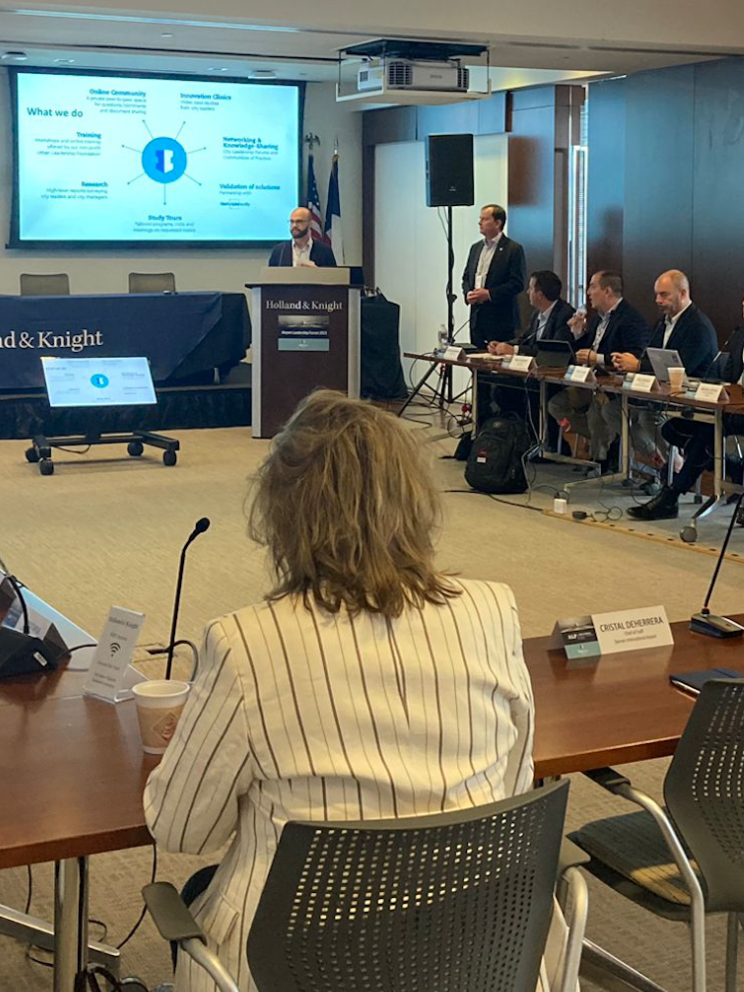
Photo: DEMANDSOLUTIONS
IDB showcases leading ideas to improve cities
30 September 2015
by Tom Teodorczuk
Demand Solutions, the one-day event hosted by the IDB (Inter-American Development Bank), which economically and environmentally supports countries in Latin America and the Caribbean, has swiftly established a reputation for being an indispensable urban development forum. This year’s event further served to reinforce this.
An eclectic line-up of municipal policy-makers, entrepreneurs and civic thought leaders gathered at the IDB headquarters in Washington DC to debate and discuss how to improve life in cities in the present and transform urban living in the future.
Here are some edited highlights from the speakers at Demand Solutions:
Janette Sadik-Khan, Principal, Bloomberg Associates and former Commissioner of the New York City Department of Transportation:
In just a few years New York City has become a very different city. New Yorkers are fluent in a completely different language. They can talk about plazas or about bike shares. Our mean streets have become much nicer in a very short period of time. We’ve done that by building better bus networks, better bike networks and by building a city that we wanted to see installed. We worked towards getting the streets that we wanted and not the Stone Age system we inherited.
Times Square became our signature project. We took an ugly, under-performing, unsafe street and turned it into a new central square. It was a Broadway smash hit. Pedestrian injuries went down and it was better for business and for traffic. It was so popular that even when Mayor de Blasio said he wanted to put it back to the way it was before, New Yorkers led a huge outcry. In just six years it went from, ‘How could you close Times Square for cars and create Carmageddon?’ to New Yorkers demanding that that space be preserved for people. It was an extraordinary change in culture in a very short period of time. We also built out a strong bike network, 100 percent paid for by private sponsors, which was the first new transportation system in New York City in 60 years.
These strategies are part of the new DNA for New York City making it easier for people to bike, walk, take the bus or train and leave the car keys at home. The former mayor, Mike Bloomberg laid the groundwork for these changes with PlaNYC, his blueprint for a more sustainable city, which showed that when you solve for the environment, you can boost the economy and save lives on city streets. By making our streets safer for walking, biking and transit, you are not just changing the street–you are changing the world. Mike Bloomberg and our partners at Bloomberg Philanthropies are working on a suite of programmes to build smarter and safer cities showing that mayors can lead the fight against climate change. It’s a global network that is committed to cutting emissions, sharing data and tracking progress. It’s basically a PlaNYC for the planet.
Richard Blum, Chairman, Blum Capital Partners & Founder and Trustee, Blum Center for Developing Economies:
There are good ideas everywhere, whether it’s a village in the Himalayas or a plantation in Central America. Some of the best ideas I find come from talking to little people in villages. Most of our ideas come from other people, not from us, and we find that listening to people talk about the problems that exist in a city gives you much better results.
Jan Gehl, Founder Gehl Architects and global city design consultant:
The purpose of city planning used to be to make the cars happy. But now we have a distinct new paradigm and that is to create increasingly better cities for people and a better quality of life. We know we must address sustainability and health. Increasingly we realise the most important part of cities is the quality of life for people and the quality of people in the city. We also realise if we make cities where people cannot meet and have a good time together, they will not be good cities. Looking at liveability, sustainability and health, if we look after the people in the city, we address all these important issues in one policy.
If we want better public transportation we have to make better public realms because these two things are both sides of the coin. Traffic planners are much more smarter today than in the 1980s. They have embraced the policies of changing streets from asphalt to bringing in bike lanes, creating sidewalks and street trees and making cities much more beautiful and more safe.
You have to tell people what your vision is and then people can understand what you’re doing. We started in Copenhagen in the 1960s to take an interest in people because nothing was known at that time about how physical environment influenced people’s behaviour and their lives. We started to collect information and documentation about people use the city and how the changes influenced the city. Studying what people liked and didn’t like in the city led to the city government being much more visionary and they started to think about not where the city would be in five years time but in 20 or 30 years time. They started to make strategies and one of those was for Copenhagen to be one of the best cities in the world.
You can influence a city in a more humanistic direction. All over the world there is a strong urge to have more liveable, sustainable and healthy cities. People can bring you a much better city if you invite them and have a vision for the future that they should have a much better time.
Jerry Sanders, Chairman and CEO of skyTran, an elevated high-speed, low-cost rapid transportation vehicle:
Without Smart Transportation, humanity is struggling to match its growth. Surface traffic has to change because even if you have an electric car, a computerised car or a shared car, all cars and modes of transport are stuck in the same traffic. That traffic leads to pollution. Is the solution more roads? No. The more roads we build the more traffic we get. Do we have more public transportation? It’s slow and inconvenient because you’re following someone else’s schedule and it’s crowded, you’re stuck in traffic and there are too many stops along the way. Why would anyone want more of that? There are no smart cities with stupid transportation.
Daniele Quercia, Visiting Scientist, University of Cambridge:
When I was at Yahoo Labs in Barcelona, we built a new cartography of a city–a cartography based on human emotions. People ranked pictures on a map and we built new mapping tools based on their experiences. In this cartography you find the shortest path from A to B but also you find the happy path, the beautiful path, the quiet path. In tests we conducted in Boston and London, people really loved the quiet, happy and beautiful paths because the experience was totally different and required just a few minutes of extra walking time.
The research tried to avoided the disruptive idea of focusing on the shortest path or the most efficient path. It is the idea of avoiding robbing people of experiencing the city in which they live. It’s important to celebrate your experience with your city and not think always about efficiency.
The main factor determining happiness in cities is social capital. All the negative elements associated with unhappiness are elements that decrease the potential for social interaction. Isolated buildings or fast-moving cars stop our interactions. Elements like greenery are things that put people together.







